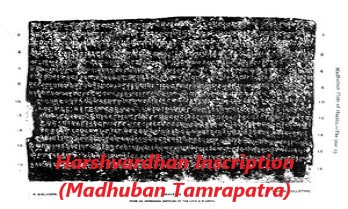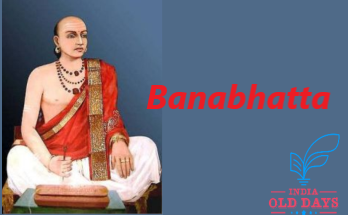Feudalism start in India
Meaning of feudal system
The feudal system distinguishes the Post Gupt period from other periods of ancient India. The original meaning of feudalism is neighboring, and it has been used in the Kautilya’s Economics and Ashoka’s inscriptions for the neighboring rulers in the Maurya period. Before the Gupt period, the term was used by policymakers to refer to the land property of the neighborhood. The frontier King (Pratyantanirpati) mentioned in Samundragupt’s Allahabad Prasasti also falls under the original meaning of samanta. The end of the gupt period and certainly 6th century a new meaning was revealed. Samanta now meant a defeated but restored offering king, who was within the boundaries of the kingdom.
Origin of feudal system
The origin and development of the feudal lords was an important part in the development of the feudal system. Where in the early period, the work of administration was seen by the person appointed by the center, after the Gupta period, this work came to the defeated but restored kings, Those who were loyal to the king and sent alms. In the post-Gupt period this administration could be seen in the frontier provinces, Whereas in Harsh and later times it also started being found in the center of the state. The feudal lord was quite independent in his field. Soon he left the old Nayabs behind in wealth and honor.
In order to make these powerful elements a part of the state, they (the feudatories) were given high positions in the king’s court. Hence, the king of Vallabhi, who was defeated by Harsha, not only became Mahasamant but also went to higher positions like Mahapratihar and Mahadandanayaka. The officers of the central court also demanded and received the same respect as these defeated kings, but not only satisfied with the titles, these officers also demanded the area. This was the process of feudalization of India, which can be considered as the Indian feudal form.
The process of feudalization was accelerated by two things-
- Lack of money to pay in salary and
- The idea that the king’s honor depended on the size of his feudatories.
Old codes like Economics give a detailed account of the salaries of the officers and Hieunsang states that the seventh century. Some high officials also used to get their salary in cash. After this, due to the slowdown in world trade and the decrease in circulation of currency, it became necessary that the revenue of the village or district be provided to the officers in place of salary. Some contemporary sources tell us, that the king was happy to cancel such a grain, Especially if that officer offended the king. But generally the process of feudalization was stronger than the central ruler.
Rise of feudalism
The rise and development of feudalism can be seen in the land grants given to the Brahmins after the first century. Their number increased in North India during the Gupta period, which increased further in the later period. Nalanda Buddhist Vihar owned 200 villages during the Harsh period. The purpose of handing land tax to Brahmins and temples was not to provide civil service but spiritual service to their patrons. They were entrusted with administrative rights such as financial powers and law and order and to recover fines from criminals. According to Hiuensang, the salaries of the higher officials of the state were paid as land grants, but such grants have not been received. They may have been marked on something that would have been destroyed.
This process of creating a class of landlords was unusual throughout the country. This custom first started in Maharashtra around the first century. It seems that in the 4th century, land grants were made in a large part of Madhya Pradesh. The practice became important in the fifth-sixth centuries in West Bengal and Bangladesh, in the sixth-seventh centuries in Orissa, in the seventh century in Assam, in the eighth century in Tamil Nadu and in the ninth-tenth century in Kerala. In order to find an additional source of income for the Brahmins and to extend agriculture to new areas, the practice of land grant was first introduced in remote, backward and tribal areas. On getting useful, it was expanded into Central India or Madhya Pradesh, which was a civilized part of the country and the center of Brahminical society and civilization.
Another special feature of early Indian feudalism was, to arrange for an economic unit of 10, 12 or 16 villages or their multiples. First-second century. It is said in the rule book of Manu, that collectors of 10 villages should be given salary by donating land. This unit was also in Rashtrakuta and to some extent in Pala state. The social-economic aspect of feudalism in India has been associated with the transformation of the post-Gupta period (who were considered servants of the above three varnas) into cultivators. In the old populated areas, land was probably given to the Shudras. Many tribal tribes in the backward areas were included in the Brahminical system through land grants and were called Shudras. For this reason, Hiuensang called the Shudras farmers and for about four centuries. Alberuni repeated the same thing after.
Role of early feudalism
The historical role of early feudalism was important for several reasons. First of all, it was possible to expand agriculture to new areas in Central India, Orissa and East Bengal through land grants. This situation was also in South India. Overall, agriculture expanded greatly during the early feudalism.
Entrepreneurial Brahmins introduced new methods of agriculture to the backward and tribal areas. The tribesmen progressed by the priests promoting certain traditions and beliefs. The priests helped the tribal’s in the development of farming by running plows, using manure, knowledge of weather and plants, especially with the knowledge of rain. Most of these things are mentioned in Agriculture Parashar, which was the creation of this time.
Secondly, a system was found to run the administration of the area donated by land-grant, because this work was done by the recipient of the donation. In the established and backward area, religious donations developed a sense of loyalty to the system established among the people. On the other hand, the secular feudal lords served the masters during the war by soldiers and by the administration of the region.
Thirdly, the tribal areas were Brahmanized through land grants and they got the benefits of improved life. In this sense, feudalism worked to connect the country. According to the Brahmavivarta Purana, the main reason for the division of the four varnas into the hundreds of castes and into the mixed castes was to establish direct contact with the Brahminical system by donating land to these tribes.
Therefore, Indian feudalism went through many developmental stages. Gupt period and two centuries after that. The tradition of granting land grants to Brahmins and temples started in, whose form and number continued to change in Pal, Pratihar and Rashtrakuta states. In the initial period only economic rights were given, but 8th Ownership also started being granted. The process was completed in the 11th and 12th centuries when the whole of North India was divided into economic and political units and was donated to some religious or secular persons, Who were enjoying it as a manor.
Result of feudalization
As a result of feudalization, the influence of the king gradually diminished in his central region, as the revenue-producing land started to get away from the influence of the central administration. The process of weakening of central power also took place in these countries, but in India it became an integral part of revenue. It became an essential part with special emphasis on the feudal cycle. Contemporary sources became a special way of demonstrating the feudatories of feudatories at the king’s court. The number of feudatories and Mahasamantas indicates the king’s glory, but this type of feudal cycle was unstable. After the weakening of the central power, the Mahasamant used to try to come to the center of the freedom or feudal cycle.
Reference : https://www.indiaolddays.com





